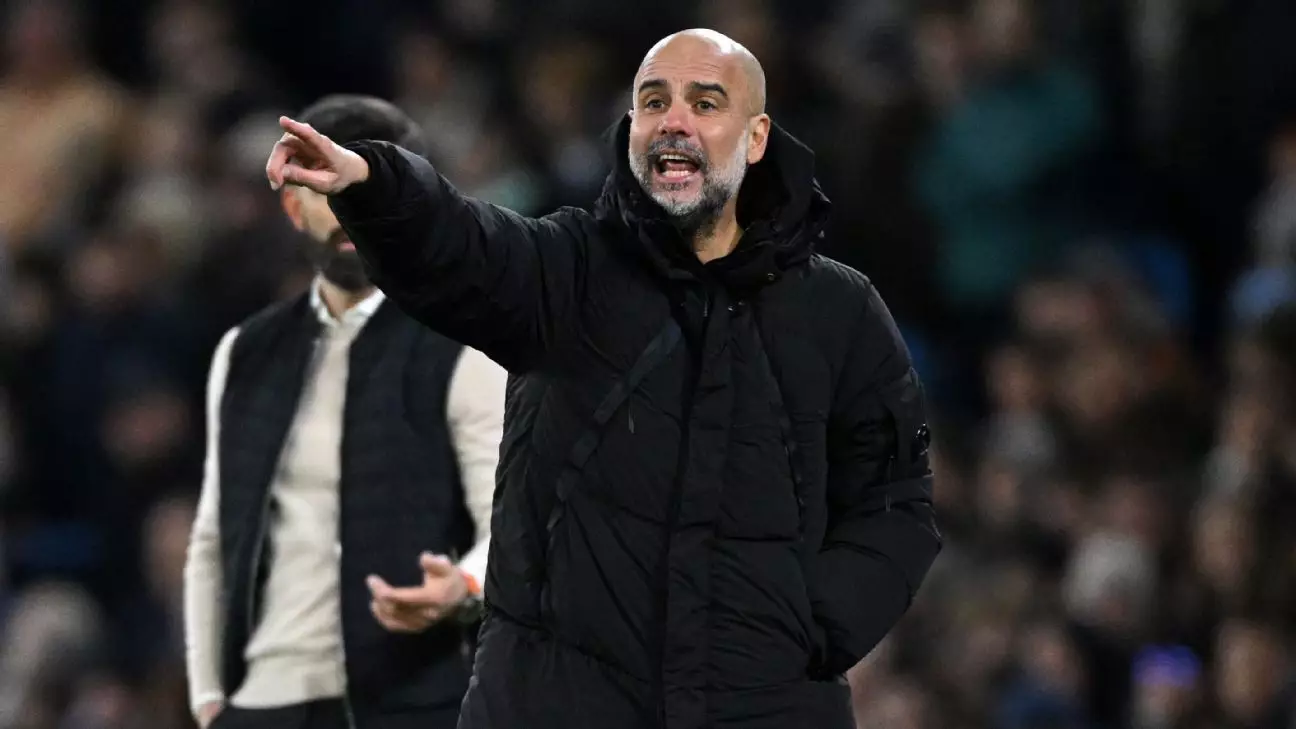In the world of football, the smallest details can have the largest impact on performance. Recently, Pep Guardiola, manager of Manchester City, expressed his concerns about the ball used in the FA Cup, after a less-than-stellar outing against Plymouth Argyle. Despite clinching a 3-1 victory, City’s struggle in front of goal raised eyebrows, leading Guardiola to question the very equipment that players rely on. In a sport where precision is paramount, such criticisms call for a broader examination of the tools athletes use.
Manchester City dominated the match, taking an astounding 29 shots yet culminating only in nine on target. The frustration was palpable, as Guardiola noted the ball’s unpredictable nature. “It’s difficult to control,” he remarked, illustrating a sentiment shared by players across various leagues. His assertion that the ball is “not right” signifies more than just personal frustration; it underscores a recurring theme in football where player grievances regarding equipment are often overshadowed by the glamor of the game. For a manager who thrives on tactical excellence, the ball’s performance—or lack thereof—represents a significant hinderance.
The Response: An Official Standpoint
In response to Guardiola’s outcry, an FA spokesperson defended the Mitre Ultimax Pro ball, asserting that it complied with FIFA testing and quality standards. They emphasized that the ball delivers on performance, citing the over 350 goals scored so far in the tournament. This defense reveals the tension between subjective experience—where players feel the ball behaves unexpectedly—and objective standards set by governing bodies. While the FA’s reassurances aim to calm the storm, they simultaneously highlight the ongoing debate about the variances in equipment across competitions.
Echoes from the Field: Arteta and Other Voices
Guardiola is not alone in his concerns. Arsenal’s Mikel Arteta has also drawn attention to the ball used in cup competitions. Following a disheartening loss to Newcastle in the Carabao Cup, Arteta referred to the ball’s flight, reinforcing the notion that players’ performance can be affected by more than just strategy and skill. Such testimonies from prominent figures lend credibility to the idea that the ball’s design and manufacturing processes may warrant reevaluation.
The discourse surrounding footballs also reveals an underlying inconsistency in equipment across different tournaments. The variations—from the Puma ball in the Carabao Cup to Nike’s Premier League version and adidas’s Champions League ball—pose questions about fairness and equality in exposure and adaptation for the athletes. Perhaps a standardized ball for all competitions could mitigate such issues, promoting a more level playing field.
As the debate continues to unfold, it raises fundamental questions about the intersection of sport, technology, and human experience. While disagreements over ball quality may seem trivial on the surface, they tap into deeper issues of player preparedness and performance under varying conditions. Ultimately, listening to athletes like Guardiola and Arteta could lead to improvements that enhance the integrity and enjoyment of the game, ensuring that performances are judged not on the reliability of a ball, but rather on the skill and strategy of the players themselves.

